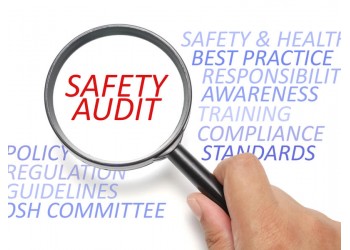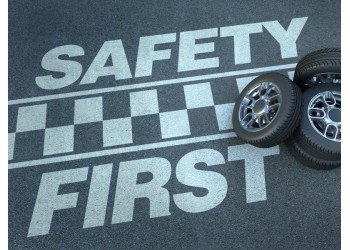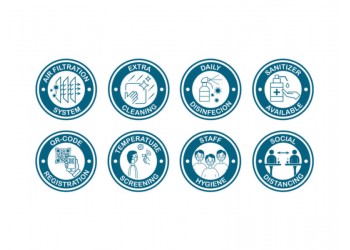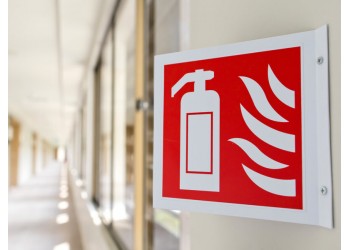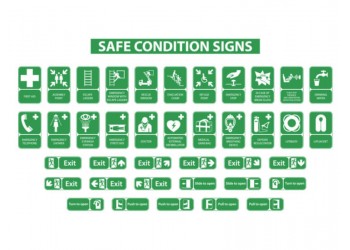Having a well-structured and understood fire safety strategy in place is vital to protecting your employees, visitors and guests. Fire Extinguishers offer a means to put out small fires or keep danger at bay until the professionals arrive. In your business, these tools offer a feeling of confidence, security and reassurance. And, having the right signage to accompany each one ensures they are used correctly and are preventative, rather than an accelerant in the event of an emergency. In this guide, we’ll cover everything you need to know about Fire Extinguisher Signs.
The purpose of fire extinguishers in business?
Providing ample fire safety equipment is just one way that businesses can work to protect the health and safety of their employees. As part of the Regulatory Reform (Fire Safety) Order 2005, they provide a safeguard, alongside items such as fire detectors and alarms. It is important to remember that fire extinguishers are only designed to tackle small fires. And, that their use is not compulsory by those who have not deemed the ‘responsible person’ in a business (this title is normally assigned to the landlord, property owner or appointed fire operative). Fire extinguishers are an effective way to contain small fires in many environments. However, their use needs to be backed by the right education and support, allowing the individual to use them safely and appropriately in any environment.
Legal obligations with fire extinguishers
We mentioned the Regulatory Reform (Fire Safety) Order 2005 above which provides guidance to commercial properties for the availability and use of fire-fighting equipment. It states that businesses are required to assign a dedicated Responsible Person to oversee the management of fire safety risk. This includes carrying out risk assessments, identifying the need for safety signs and/or equipment and implementing a fire management plan.
Fire extinguisher categories
In the UK, we have a clear categorical way of identifying different types of flammable materials and the fire extinguishers that should be used to fight related fires. The 6 fire-involved substances currently are:
- Class A – Combustible carbon-based solids. These include materials such as fabrics, textiles and paper.
- Class B – Flammable liquids. These include diesel, oils (non-cooking), petroleum.
- Class C – Flammable gases. These include methane, propane or butane.
- Class D – Burning metals. These include magnesium and aluminium.
- Class F – Fats and cooking oils.
- Electric Spark – These include fires caused by electrical equipment.
To pair with these, the fire extinguishers manufactured here in the UK are separated into corresponding categories:
- Class A Fire Extinguishers – water, foam, dry powder, wet chemical, water.
- Class B Fire Extinguishers – water mist, C02, certain wet chemicals, dry powder and foam.
- Class C Fire Extinguishers – water mist and dry powder.
- Class D Fire Extinguishers – specialist dry powder.
- Class F Fire Extinguishers – wet chemical and water mist.
- Electrical Fire Extinguishers – foam, C02 and water mist.
Your exact needs will depend on the results of your risk assessment. You are legally obligated to have a minimum of 2 x Class A Fire Extinguishers installed on every floor of a commercial property. The only exception here is if the property is very small.
Fire Extinguisher Safety Signs
As with all safety equipment, visibility should be prioritised during installation. Your fire extinguishers need to be positioned in an accessible and well-lit location with safety signs accompanying them. These signs need to indicate their availability and highlight the type of extinguisher they are. A risk assessment will identify the right class for your business. For example, catering or hospitality businesses are more likely to deal with fires caused by fats and cooking oils than they are with those caused by flammable gases.
The dangers of using the wrong fire extinguisher
Using the right fire extinguisher is more important than you may think. Not all fires are fuelled by the same materials and the wrong chemical reaction can accelerate the emergency in question. For example, C02 fire extinguishers (such as those in Class B and or electrical fires) release a 10-15 seconds burst of C02 which is used to suffocate fires. It does this by drawing in all of the oxygen, which can increase the risk of asphyxiation. C02 extinguishers should also never be used on a chemical fire, as this could cause a violent explosion and increase the risk of injury or death.
Minimise injury risk with the right sign
The right safety sign will provide all the information needed to give the users confidence in their actions. They work with the rest of your health & safety efforts and will better reduce the risk of injury in the event of a fire. At Lasting Impressions, we have a range of signs that provide clear, concise and easy-to-understand information. All of these are designed in accordance with ISO 7010 – a standardised process of using logos and signs for ease of understanding.
We currently have options for:
- Water-Fire Extinguishers
- C02 Fire Extinguishers
- AFF Foam Fire Extinguishers
- Foam Spray Fire Extinguishers
- Powder Fire Extinguishers
- Wet Chemical Fire Extinguishers
- Hydro-Spray Fire Extinguishers
- Water + Additive Fire Extinguishers
- L2 Powder Extinguishers
There are a variety of different styles available too. From detailed and educational signs that provide guidance on the type of fire, each extinguisher is safe as well as simple symbol options. Depending on the depth of information that is needed, how fast your staff turnover is and the details discovered during your risk assessment, we’ll find the right fire extinguisher sign to accompany your equipment.
We also have a specialist team on hand to answer any questions or queries you may have. Installing safety signs in your workplace plays a key role in your legal obligation and the management of employee satisfaction. If you would like to speak to a member of our team to gain a clearer understanding of how to best do this, please get in contact with us here today.

